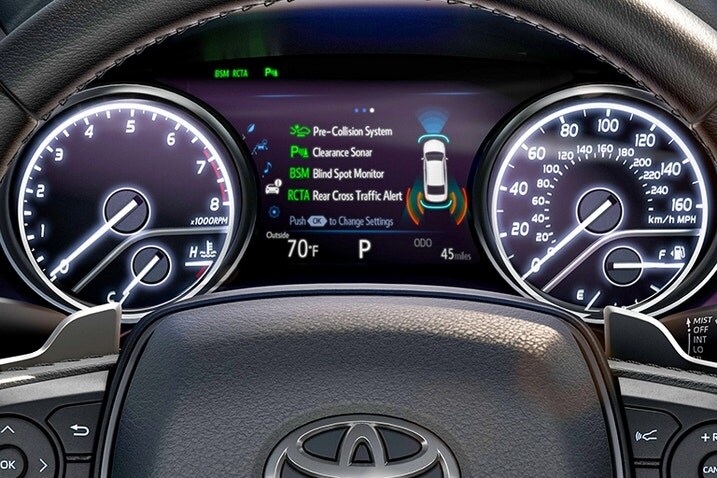Rear cross-traffic alert systems (RCTA) alert you of what you can’t see while backing up your vehicle, from a car crossing your path just out of the backup camera’s view to a pedestrian approaching. For a long time, the best way to see what was behind your car was to check the mirrors or turn your head and look for yourself. With the standardization of backup cameras, our ability to see what’s coming behind us has grown exponentially. However, even backup cameras have some limitations, which is where rear cross-traffic alert (RCTA) systems come in.
How does rear cross-traffic alert work?
These systems are increasingly prevalent in modern cars, and their ability to detect objects entering your blind spots while reversing is critical. Coincidentally, many of these systems use the very same ultrasonic sensors as your blind-spot monitor. These are commonly identified by the round dimples in your bumper. (Keep them clean!) The sensor emits ultrasonic waves, and when these waves encounter an object, the car will report it to you in the form of an audible alert. Often, manufacturers accompany this warning with some kind of visual alert, and some systems will also brake if you fail to do so.
Making use of a car’s cross-traffic alert system is entirely automatic. RCTA systems begin monitoring while the car’s backup camera is active, so there’s no need to worry about turning the system on and off. However, it’s worth noting that the sensors used by a car’s RCTA system are different from parking sensors. These are designed to tell you how close you are to an often stationary object. This makes them great for letting you know you’re going to hit the luggage you left behind the car but not so great at picking up the oncoming car that isn’t visible in the camera yet. It is important to be aware of this limitation — we don’t want to rely solely on parking sensors for object detection.
Limitations with rear cross-traffic alert
The combined blind-spot coverage provided by your car’s parking sensors and its RCTA system is expansive but not perfect. In particular, there are some limitations to be aware of when using RCTA systems. The speed of an incoming obstacle can present an issue, as many systems require an object to be of a certain size and at or above a certain speed to detect it. For example, RCTA may not be able to pick up on a low-speed porous object like a shopping cart. Additionally, angled parking spaces can create larger blind spots in sensors, as a sensor can sometimes be angled away from oncoming traffic, and large objects next to your car — parking pylons, trucks, walls, etc. — can also interrupt the sensors.
The best remedy for minimizing the impact of these limitations is to follow the driving school playbook: Always check your mirrors before backing up. Don’t just rely on the backup camera. Its field of view is limited, just like yours. Combined, RCTA, a backup camera, and a manual check of your sight lines before backing up is the safest way to get out of a parking spot.
Should you buy a car with RCTA?
Unlike backup cameras, rear cross-traffic alert systems are not standard on new cars, though a number of manufacturers do include the feature either as part of a wider group of safety features or as an available add-on. Most manufacturers stick with the “rear cross-traffic alert” name, though some use slight variations of the term. Volvo, for example, simply calls its system “cross traffic alert.” Lexus, which includes automatic braking in its RCTA system, likes to use “rear cross-traffic braking system.”
Is RCTA, regardless of its name, worth having? We’d argue it is, even if you’ve got to pay a premium. The safety benefits of being able to see the unseen when backing up are too numerous to go without, and the added security of automated braking on top makes this feature hard to say no to.
